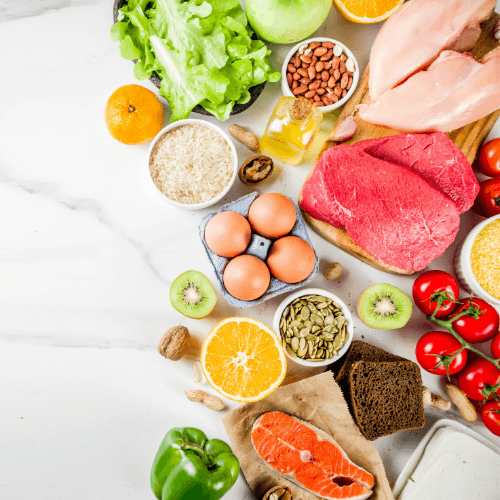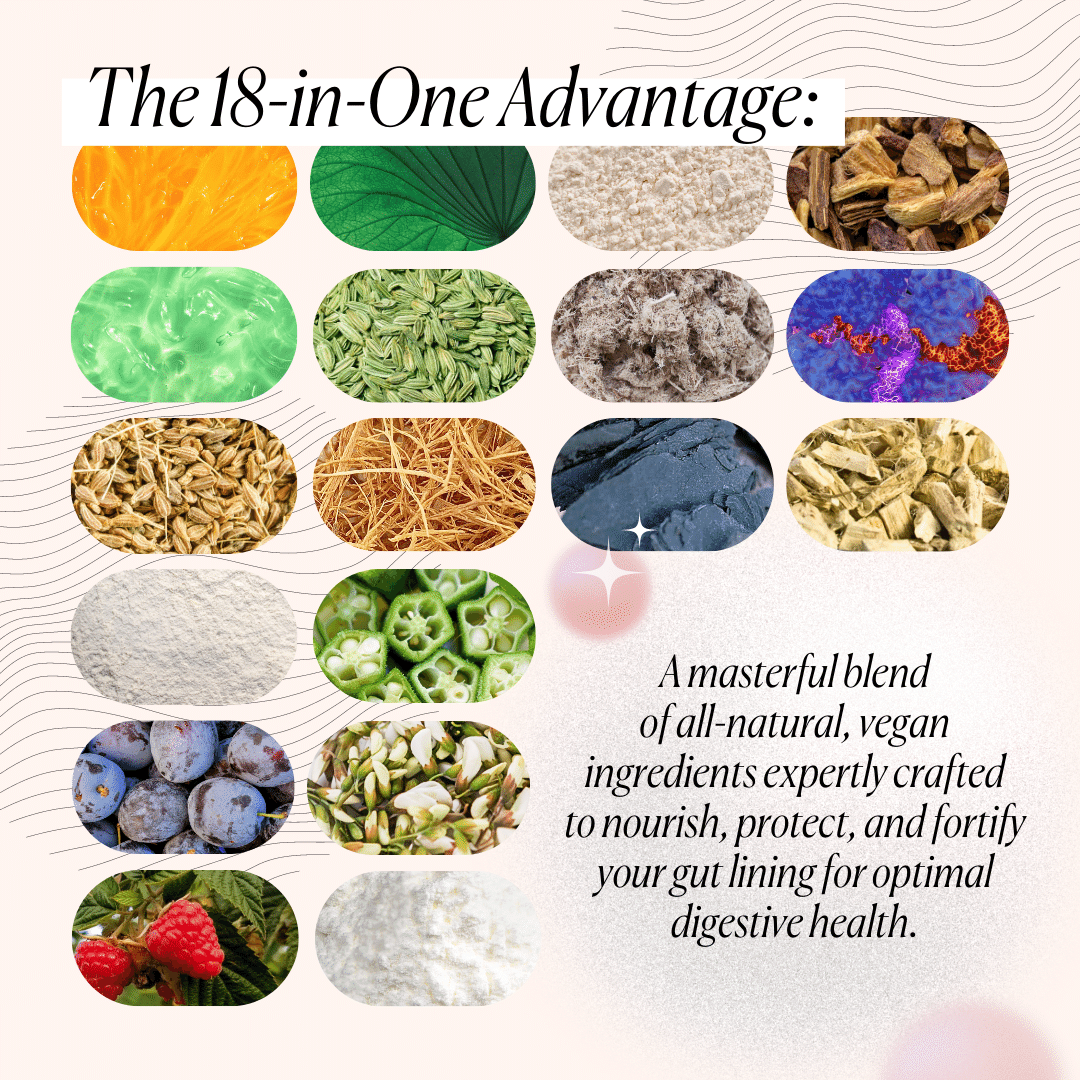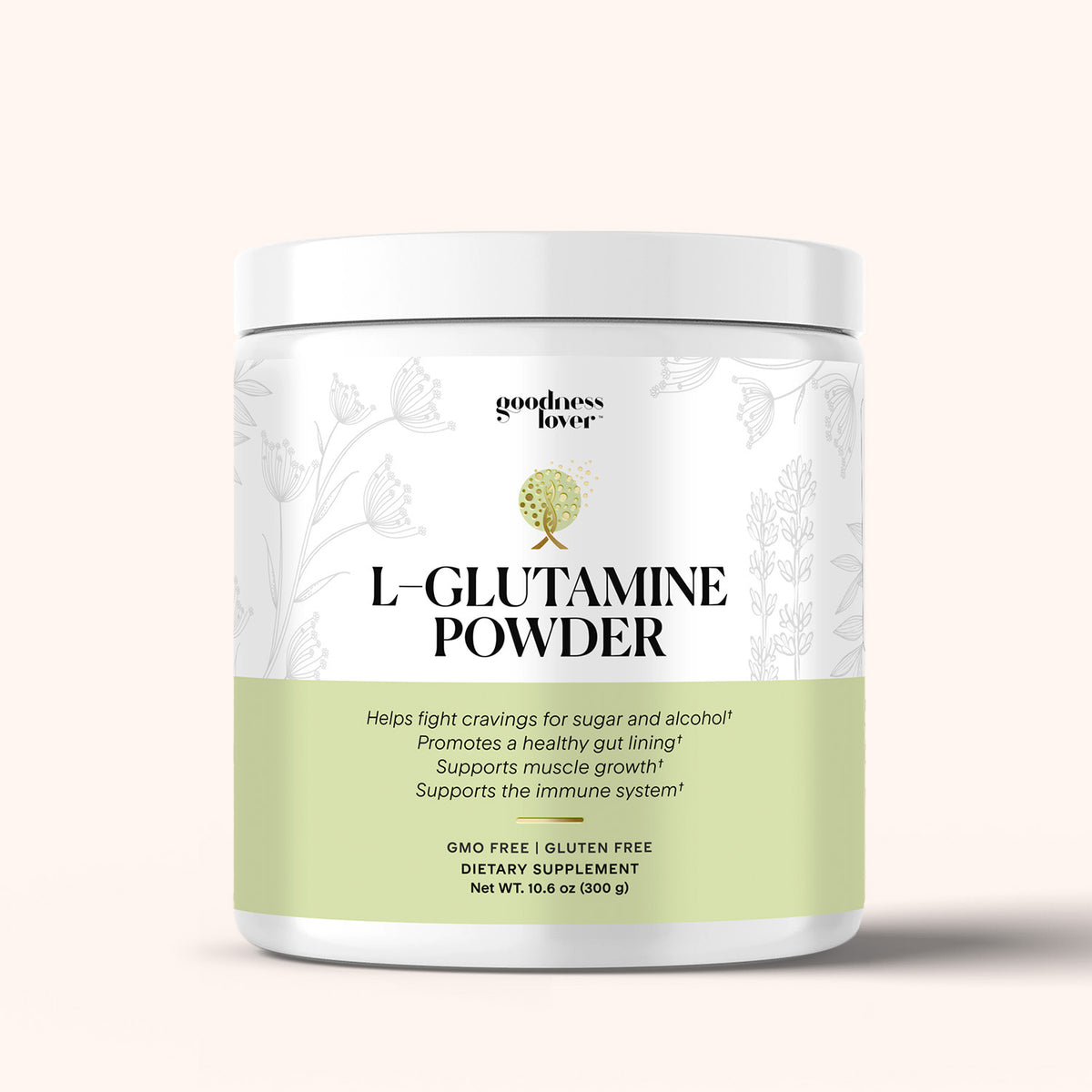Do you have Irritable Bowel Syndrome where you often feel bloated and suffer from constipation and/or diarrhea? Do your symptoms worsen if you eat a lot of garlic or onions? Have you tried a probiotic and it made you feel worse? Then you may benefit from doing a low FODMAP diet. FODMAP is an acronym for fermentable oligosaccharides, disaccharides, monosaccharides and polyols. FODMAP-containing foods are a normal part of the diet, and do not cause symptoms in most individuals. However, they are a group of sugars which may be difficult to digest if you have IBS. They are osmotic, meaning they attract water into the bowel and are poorly absorbed in the small intestine, which then leads to symptoms of IBS such as bloating, gas and diarrhoea. People with IBS often show significant improvement when they avoid these foods.
Where are these FODMAPs found?
- Fructose is found in fruit, honey and high fructose corn syrup (a common synthetic sweetener added to many processed foods). The ability to digest and absorb fructose varies widely amongst individuals.
- Fructans are naturally occurring storage carbohydrates found in various vegetables, fruit and cereal grains including onions, garlics and artichokes, apples, rye and wheat. Wheat is the major source of fructans in the diet. Fructans cannot be absorbed as the small intestine lacks hydrolase, the enzyme required to break the bonds of the fructans molecules. This makes them the most common FODMAP to cause symptoms.
- Lactose is a sugar naturally occurring in milk and dairy products from cow, sheep and goat. Only about 30% of the world’s population has the enzyme, lactase, required to break down this sugar beyond the age of two years! Some people are also sensitive to milk proteins such as casein and whey, therefore avoiding lactose only is sometimes not enough.
- Galactans are other oligosaccharides (like fructans) which can cause a lot of gastrointestinal symptoms. Lentils, chickpeas and beans are examples of galactans and these are often a large part of a vegan/vegetarian diet.
- Polyols do not have an active transport system in the small intestine which can lead to low levels of absorption. They are present in a variety of food: mannitol is found in mushrooms, sorbitol is naturally occurring in stone fruit such as avocado, peaches and apricot. Sorbitol, xylitol, mannitol and isomalt are polyols that are used as artificial sweeteners.
As FODMAPs are poorly absorbed in the small intestine and instead pass through into the colon, it can take anywhere from several hours to a couple of days for symptoms to occur after consuming high FODMAP foods. When symptoms appear shortly after eating, it’s often because the peristaltic action of digestive muscles triggered by the incoming food moves pervious meals further along the GI tract. Receptors in the gut activate in response to the resulting distention, which causes symptoms to occur.

What effect do FODMAPS have on the digestive system?
Susceptible people can experience intestinal symptoms from ingestion of FODMAPs for a number of reasons:
- The carbohydrates are not well absorbed into the body and remain in the digestive tract for longer periods
- Due to being osmotically active molecules, FODMAPs pull water and other fluids into the intestines. This may lead to altered bowel movements (such as diarrhoea), bloating, fluid retention and subsequent gastrointestinal pain.
- These carbohydrates are rapidly fermented by the bacteria that normally reside in the intestine. Excessive fermentation can increase the production of gases such as hydrogen, carbon dioxide and methane, resulting in gas and bloating.
To determine if FODMAPs might be contributing to your symptoms, the most effective strategy is to eliminate all FODMAP-containing foods and observe your symptoms. Following the elimination of all FODMAPs, the next step is to systematically re-challenge one-by-one each FODMAP to help determine the tolerable doses and types of FODMAPs for you.
Non-GIT conditions that may benefit from a low FODMAP Diet:
In addition to assisting in the management of functional gut disorders such as IBS, evidence suggests that a low FODMAP diet may also have a role to play in mood and neurological disorders and even in children with autism spectrum disorder. Fructose and lactose malabsorption have been associated with mild depression and studies have shown improvement of affective symptoms in depressed patients on a low fructose diet. Research also suggests that high intestinal fructose concentration may promote the formation of fructose-L-tryptophan complexes in the gut, reducing tryptophan absorption. As tryptophan is the precursor of serotonin, this could also affect the production of serotonin, our “feel good” hormone.
How to Do a FODMAP Elimination Diet
1. The Elimination Phase
To trial the low FODMAP diet, all high-FODMAP foods need to be eliminated from the diet for at least two weeks, until there has been a significant reduction in symptoms. Relevant symptoms should be monitored and recorded on a daily basis, to track any benefits from the dietary program. Table 1 gives a detailed list of foods in each FODMAP category which should be avoided. Where quantities are given, these foods should be avoided only above the given dose. Many alternative foods can be consumed whilst following a low FODMAP diet. Table 2 provides a list of suitable foods which can be enjoyed. It is generally not recommended that you follow a low FODMAP diet long-term. FODMAPs are a normal part of the diet and have benefits for health, such as providing fibre and prebiotics for gastrointestinal health. Restricting dietary intake of a wide array of foods should generally be avoided if possible due to the risk of nutrient deficiencies.
Table 1. Foods to avoid on a low FODMAP diet
FODMAPS |
Foods to avoid |
Fructose |
Fruits: apples, boysenberries, cherries (>3), figs, pears, nashi pears, peaches, mango, watermelon, tamarillo, tinned fruit, dried fruit, large serves of fruit
Vegetables: asparagus, artichokes, sugar snap peas
Sweeteners: honey, fructose (>5g daily*), high fructose corn syrup, agave
Drinks: fruit juice, soft drinks sweetened with fructose, sparkling wine, dessert wine, ciders, rum
|
Fructans |
Fruits: custard apples, nectarines, peaches, persimmon, rambutan, tamarillo, watermelon
Vegetables: artichokes, asparagus (>3), beetroot (>4 slices), Brussel sprouts (>½ cup), broccoli (> ½ cup), cabbage - savoy (>1 cup), chicory root, corn (> ½ cob), fennel (> ½ cup), garlic, leeks, okra, onions, peas (>1/3 cup), radicchio lettuce, snow peas (>10), spring onion (white part)
Cereals: wheat, rye, barley products (bread, pasta, couscous, crackers, biscuits), inulin
Nuts: cashews, pistachios, almonds (>10)
|
Galactans |
Legumes: all (chickpeas, lentils, dried/canned beans, baked beans, whole soy beans)
Drinks: soy milk
|
Lactose |
Milk: cow, goat and sheep
Cheese: fresh (cottage, ricotta, cream cheese, mascarpone)
Other dairy products: yoghurt, ice-cream, custard
|
Polyols |
Fruits: apples, apricots, avocado (> ¼ ), blackberries, cherries (>3), longan (>10), lychees (>5), nashi pears, nectarines, pears, peaches, plums, prunes, watermelon
Vegetables: cauliflower, celery (>1 stick), mushrooms, snow peas, sweet potato (>½ cup)
Sweeteners: sorbitol (420), mannitol (421), xylitol (967), maltitol (965), isomalt (953)
|
* Up to 5g daily of fructose may be consumed if taken with meals.

Table 2. Suggested alternative foods that can be consumed on a low FODMAP diet
Food group |
Foods to enjoy |
Fruits |
Banana, blueberries, grapefruit, grapes, honeydew melon, kiwifruit, lemons, limes, mandarins, oranges, passionfruit, pawpaw, pineapple, raspberries, rock melon, tomatoes |
Vegetables |
Alfalfa, bamboo shoots, bean sprouts, bok choy, carrot, cabbage (common), capsicum, choko, choy sum, eggplants, green beans, lettuce, chives, parsnip, potato, pumpkin, radish, silver beet, spring onion (green only), squash, zucchini |
Cereals |
Gluten-free products, spelt, corn, oats, polenta, quinoa, rice (not: gluten is NOT a FODMAP but commonly occurs with fructans) |
Nuts |
(<1 handful daily) macadamias, peanuts, pecans, pine nuts, pumpkin seeds, sesame seeds, sunflower seeds, walnuts |
Dairy |
Milk and cheeses: lactose-free cow’s milk, rice milk, most cheese (e.g. brie, camembert, cheddar, feta) Other dairy products: butter, yoghurt (lactose-free), dairy free gelati, sorbet |
Sweeteners |
Sugar (sucrose), glucose, maple syrup, golden syrup, stevia, sucralose |
Meats |
Beef, lamb, kangaroo, poultry, eggs, tofu, tempeh |
2. Test phase
The test phase may be commenced after at least two weeks in the elimination phase, when some significant resolution of symptoms have been achieved. The goal is to systematically reintroduce each FODMAP to determine the level of individual FODMAP consumption that can be comfortably tolerated. A five-week program for the test phase is outlined in Table 3.
Each week, you are to trial one specific carbohydrate type, consuming one serving on three separate days. Using your symptom tracker, monitor your symptoms for 48 hours after each serving to determine if there is a possible reaction to that carbohydrate. If you believe there is no reaction over the following 48 hours, you can continue with the next dose of that carbohydrate. If you experience a worsening of symptoms following the reintroduction of a specific FODMAP, then it is recommended to discontinue testing that FODMAP and wait until symptoms resolve. Once the symptoms have resolved, you can move onto the next type of FODMAP to trial.
Keep in mind that FODMAP reactivity is dose dependent, and due to individual variability in tolerance, some people may be able to tolerate all three doses while others may react after only the first dose. For some with particularly low or high tolerances, the serving sizes below can be adjusted to better define tolerance levels.
All other FODMAP sources should continue to be avoided for the duration of the five week test phase, even if a particular FODMAP appears to be well-tolerated from the rechallenge. Small doses of individual FODMAPs may have an additive effect which makes it difficult to determine the individual cause.
After the five-week testing phase, it is recommended you integrate foods from all the FODMAP groups which were well tolerated into your normal diet (at a lower dose) in order to determine your tolerance when combining the FODMAPs. Symptoms again should be closely monitored and if you experience a return of symptoms, eliminate those FODMAP groups again until symptoms resolve. The combination of FODMAPs should then be reintroduced at a lower dose. For the FODMAP types which aggravated symptoms, move onto the maintenance phase to determine your threshold of tolerance ongoing.
Table 3.
| Week | FODMAP | Monday | Tuesday | Wednesday | Thursday | Friday | Saturday | Sunday |
| Week 1 |
Mannitol and sorbitol
(polyols)
|
½ cup of mushrooms, 4 dried apricots and monitor symptoms | Monitor symptoms | ½ cup of mushrooms, 4 dried apricots and monitor symptoms | Monitor symptoms | ½ cup of mushrooms, 4 dried apricots and monitor symptoms | Monitor symptoms | Monitor symptoms |
| Week 2 | Lactose (disaccharide) | 250 mL of milk or 200g of yoghurt and monitor symptoms | Monitor symptoms | 250 mL of milk or 200g of yoghurt and monitor symptoms | Monitor symptoms | 250 mL of milk or 200g of yoghurt and monitor symptoms | Monitor symptoms | Monitor symptoms |
| Week 3 |
Fructose (mono
saccharide
|
2 tsp of honey and monitor symptoms | Monitor symptoms | 2 tsp of honey and monitor symptoms | Monitor symptoms | 2 tsp of honey and monitor symptoms | Monitor symptoms | Monitor symptoms |
| Week 4 | Fructans (oligosaccharide) | 2 slices of wholemeal wheat bread and monitor symptoms | Monitor symptoms | 2 slices of wholemeal wheat bread and monitor symptoms | Monitor symptoms | 2 slices of wholemeal wheat bread and monitor symptoms | Monitor symptoms | Monitor symptoms |
| Week 5 |
Galactans (oligo
saccharide)
|
½ cup of lentils or legumes and monitor symptoms | Monitor symptoms | ½ cup of lentils or legumes and monitor symptoms | Monitor symptoms | ½ cup of lentils or legumes and monitor symptoms | Monitor symptoms | Monitor symptoms |
3. The Maintenance Phase
The aim of this phase is to relax dietary restrictions as much as possible, expand the variety of foods included in your diet and establish a personalised FODMAP diet for the long-term. You are now able to reintroduce well tolerated foods and FODMAPs back into your diet, still restricting poorly tolerated foods and FODMAPs but only to a level that provides symptom relief. It is best to repeat challenges of poorly tolerated foods and FODMAPs over time to see whether your tolerance changes.

How to Get Enough Fiber on a low FODMAP Diet
Getting enough fiber when following a low FODMAP diet can be challenge if you eat mostly plant foods because so many common foods are inherently high in these sugars. A food is considered high FODMAP if it contains more than a predefined amount of oligosaccharides, disaccharides, monosaccharides, or polyols, and some of the biggest offenders are staples in many plant-based meals. Removing these foods from your diet completely means you’re also depriving yourself of the benefits these foods provide to the health of your gut and your overall health.
It’s important to aim for about 25-30g of fiber daily. Here are some foods and the amount of fiber they contain so you can have a better idea on how to incorporate more fiber into your low FODMAP diet:
Seeds, Grains and Nuts:
- 1 tbsp chia seeds (5g)
- 1 tbsp ground flax seeds (5g)
- 1/3 cup quinoa flakes or cooked quinoa (2g)
- 1/3 cup cooked brown rice (1g)
- 1/3 cup (46g) rinsed canned lentils (4g)
- 2 oz brown rice noodles (4g) ¼ cup peanuts (2.3g)
- 10 almonds (2g)
Veggies and fruits:
- ½ cup cooked zucchini (1.3g)
- ½ cup cooked spinach (3.5g)
- ½ cup cooked collard greens (2.5g)
- ½ cup cooked Swiss chard (2g)
- ½ cup cooked eggplant (1.3g)
- 1 cup raw red bell pepper (2g) ½ cup raw carrots (2g)
- 1 med. Red potato with skin, 6 oz (3g)
- ½ cup blueberries (1.8g)
- 10 med. Strawberries (2.8g)
- 15 raspberries (2g)
More fiber tips:
- 1 tbsp whole husk psyllium (5g fiber) mixed with your beverage of choice can help promote regular bowel motions
- Don’t peel the skin off your potatoes, zucchini, eggplant etc It’s packed with fiber!
- Fiber (particularly the soluble type) needs water to work effectively, so be sure to stay hydrated














What Do You Think? Comment Below: